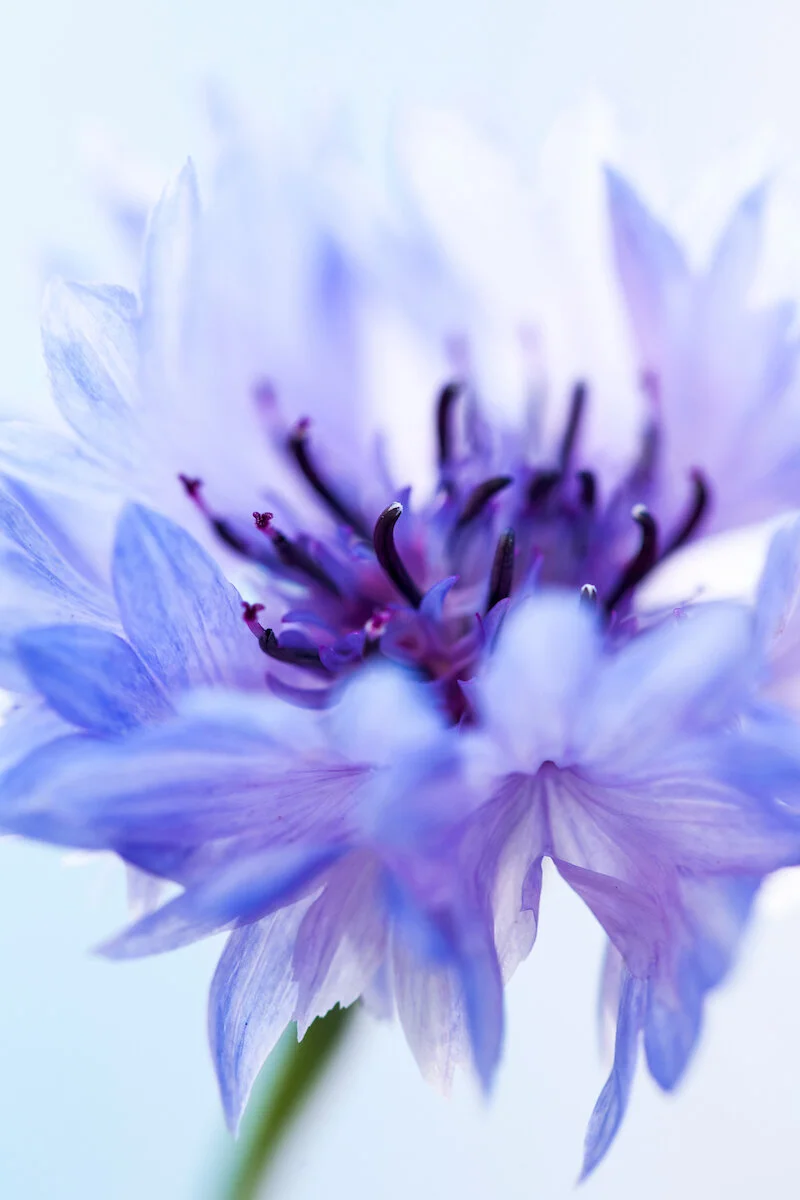Cornflower
Photograph by Sabina Rüber
Native to Europe, the cornflower was once a common sight in arable fields but it has declined dramatically in the wild due to the increased use of chemical fertilisers and pesticides in modern agriculture. Thankfully the current revival of meadow gardens and the fashion for natural planting means that this beautiful flower is widely grown again, especially as a cut flower – and it is fantastically easy to grow from seed.
The wild form, Centaurea cyanus, has handsome, cobalt-blue, buttony flowers on tough, straight stems, and even in bud it is attractive, with a patterned casing like a small-scale artichoke. In addition to the species, there are cultivars with bigger, showier flowers as well a whole host of other varieties in different colours, from deep purple-black (‘Black Boy’, pictured here) to pale pink and white (‘Snowman’).
Cornflowers are undemanding creatures, growing swiftly and easily in most soils as long as they don’t get waterlogged. Sow outdoors in early autumn or in mid-spring as soon as the soil has warmed up. If you sow in autumn, your plants will be taller and stronger, perhaps reaching 120cm as opposed to 80-90cm. Sow in drills, and take care to thin the seedlings as they grow, to an eventual spacing of about 30cm between each plant. These are tall, willowy plants, and although their stems are strong, they will need some sort of support (pea netting or canes and twine) otherwise the wind will topple them.
Back to The Flower Garden main page. To buy a copy of The Flower Garden book click here.
